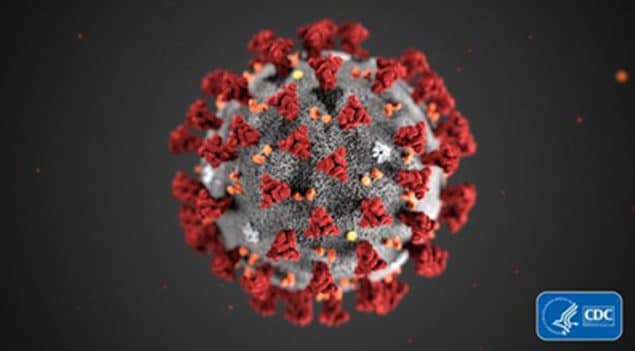
Coronavirus Disease-2019
The Centers for Disease Control and Prevention (CDC) is closely monitoring an outbreak of respiratory illness caused by a novel (new) coronavirus (named “coronavirus disease 2019” or “COVID-19”) that was first detected in Wuhan, Hubei Province, China and which continues to expand. This is an emerging, rapidly evolving situation and CDC will provide updated information as it becomes available, in addition to updated guidance, on the CDC website. The purpose of this page is to highlight resources available for the protection of workers.
The following interim guidance may help prevent workplace exposures to acute respiratory illnesses, including COVID-19, in non-healthcare settings, where it is unlikely that work tasks create an increased risk of exposure to COVID-19. The guidance also provides planning considerations if there are more widespread, community outbreaks of COVID-19.
- Interim Guidance for Businesses and Employers to Plan and Respond to Coronavirus Disease 2019 (COVID-19)
- Interim US Guidance for Risk Assessment and Public Health Management of Persons with Potential Coronavirus Disease 2019 (COVID-19) Exposure in Travel-associated or Community Settings
Infection prevention and control procedures follow the hierarchy of controls approach. This approach includes engineering controls, administrative controls (or changes in work practices), and appropriate use of personal protective equipment (PPE), which are all necessary to prevent infections from spreading in workplaces. The interim infection prevention and control recommendations linked immediately below are not intended for non-healthcare settings (e.g., schools) OR to persons outside of healthcare settings.
- Interim Infection Prevention and Control Recommendations for Patients with Confirmed Coronavirus Disease 2019 (COVID-19) or Patients Under Investigation for COVID-19 in Healthcare Settings
- Frequently Asked Questions about Respirators and Their Use
Staff at local and state health departments, infection prevention and control professionals, and healthcare personnel who are coordinating the home care and isolation of people with confirmed or suspected COVID-19, including persons under investigation, should refer to the interim guidance for home care.
When preparing for and responding to patients with confirmed or possible COVID-19, close coordination and effective communications are important among 911 Public Safety Answering Points (PSAPs), commonly known as 911 call centers, the Emergency Medical Services (EMS) system, healthcare facilities, and the public health system. Recommendations are provided in the interim guidance, shown below.
General and specific biosafety guidelines for workers handling COVID-19 specimens are provided in the interim guidance, listed below.
- Interim Laboratory Biosafety Guidelines for Handling and Processing Specimens Associated with Coronavirus Disease 2019 (COVID-19)
- Biosafety in Microbiological and Biomedical Laboratories (BMBL) 5th Edition
- Laboratory Biosafety Manual – Third Edition
Recommendations for the commercial airline industry about COVID-19, as well as recommendations for managing ill travelers onboard if novel coronavirus infection is suspected, can be found in the interim guidance below.
- Interim Recommendations for Airlines and Airline Crew: Novel Coronavirus in China
- Preventing Spread of Disease on Commercial Aircraft: Guidance for Cabin Crew
The interim guidance provides recommendations for ships originating from, or stopping in, the United States to help prevent, detect, and medically manage suspected COVID-19 infections.
Personal Protective Equipment Resources
For the general American public, who are unlikely to be exposed to this virus, the immediate health risk from COVID-19 is considered low at this time. Healthcare personnel should refer to interim infection prevention and control recommendations and guidance for caring for patients with confirmed or possible COVID-19 for additional guidance related to PPE recommendations.
- Personal Protective Equipment (PPE)
- Healthcare Supply of Personal Protective Equipment
- Frequently Asked Questions about Respirators and Their Use
- Strategies for Optimizing the Supply of N95 Respirators
To understand the difference between surgical masks and N95 respirators and to learn more about N95 respirators recommendations, including a list of NIOSH-Approved N95 Respirators, the following resources are available:
- Infographic: Understanding the difference between surgical masks and N95 respirators
- NIOSH-Approved N95 Particulate Filtering Facepiece Respirators
- Recommended Guidance for Extended Use and Limited Reuse of N95 Filtering Facepiece Respirators in Healthcare Settings
- Infographic: Important Steps for Using NIOSH-Approved N95 Filtering Facepiece Respirators
- Infographic: Three Key Factors Required for a Respirator to be Effective
To learn how to properly put on and fit a respirator, the following resources are available:
- Infographic: Sequence for Putting on Personal Protective Equipment (PPE)
- Infographic: How to Properly Put on and Take off a Disposable Respirator
- Factsheet: Frequently asked questions about Respiratory Protection: Fit Testing
- Filtering out Confusion: Frequently Asked Questions about Respiratory Protection, User Seal Check























.png)











No hay comentarios:
Publicar un comentario